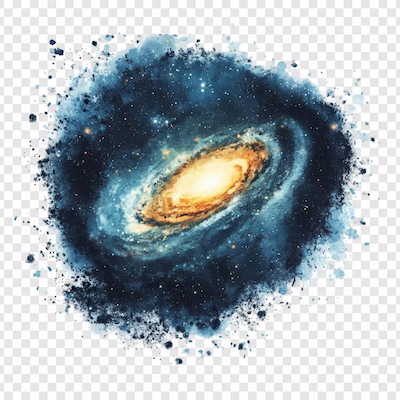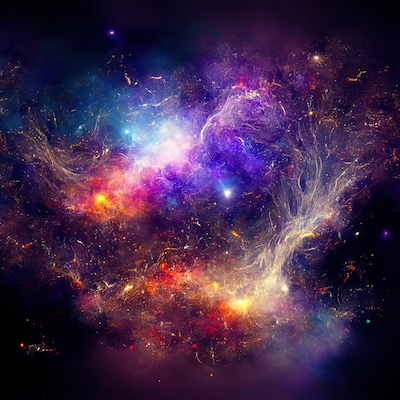
Cosmic reionization is one of the most significant events in the history of the universe, marking the transition from an opaque cosmos to a space where light could travel freely. This phenomenon occurred approximately one billion years after the Big Bang, when the first stars and galaxies began to form. Reionization involves the ionization of neutral hydrogen, allowing radiation from newly formed stars to spread throughout the universe, illuminating regions that were previously dark and cold.
Studying cosmic reionization and the first galaxies is not just a matter of scientific curiosity; it is fundamental for understanding the evolution of the universe. The earliest galaxies played a crucial role in shaping cosmic structure and the chemical composition of the universe. They are the precursors to all galaxies we observe today, and their characteristics offer valuable clues about the conditions of the early universe. Therefore, cosmic reionization and the first galaxies are central topics in modern astrophysics and cosmology.
How Cosmic Reionization and the First Galaxies Work
The process of cosmic reionization is driven by the formation of the first stars and galaxies. After the Big Bang, the universe was composed mainly of hydrogen and helium, and temperatures were so high that radiation could not move freely. As the universe expanded and cooled, hydrogen began to combine into neutral atoms. With the emergence of the first stars, intense ultraviolet radiation ionized these hydrogen atoms, creating ionized regions around the stars.
The primordial galaxies, formed from clouds of gas and dust, play a crucial role in this process. They consist of stars that burn hydrogen and emit radiation that ionizes the surrounding hydrogen. This ionization allows light to travel through space, creating a more transparent environment. As more stars form and more galaxies cluster together, the process of cosmic reionization accelerates, resulting in a universe that begins to shine with the light of stars.
Cosmic reionization did not occur uniformly; it was a complex and gradual process. Regions of the universe where stars formed first began to light up, while others remained dark for longer. This process is influenced by gas density, star formation rates, and interactions between galaxies. Astronomers have been able to map and better understand how and when cosmic reionization occurred through the observation of quasars and the properties of the cosmic microwave background.
Cosmic reionization also has significant implications for the formation of larger structures in the universe. As galaxies form and merge, they not only create new stars but also influence the behavior of surrounding gas. This ionized gas can be pulled by the gravitational forces of galaxies, contributing to the formation of galaxy clusters and other large-scale structures. Therefore, cosmic reionization is not an isolated phenomenon, but part of a continuous cycle of cosmic formation and evolution.

Advantages of Studying Cosmic Reionization and the First Galaxies
Studying cosmic reionization and the first galaxies offers a range of advantages that deepen our understanding of the universe. One of the main benefits is gaining a better grasp of how galaxies have evolved over time. The properties of the earliest stars and galaxies provide valuable insights into how matter organized itself and how galaxies formed from primordial gas. This understanding is essential to modern cosmology, helping to build a more complete model of the universe’s evolution.
Cosmic reionization is also key to understanding the universe’s chemistry. The first stars were responsible for nucleosynthesis—the process by which heavier elements formed from hydrogen and helium nuclei. These elements are essential for the formation of planets and the possibility of life. Therefore, studying cosmic reionization helps scientists learn more about the origin of the chemical elements that make up not only stars, but also planets and, potentially, life as we know it.
Cosmic reionization and the first galaxies help explain the large-scale structure of the universe. The way galaxies are distributed and interact provides clues about the cosmos’s evolution. Reionization influenced the formation of cosmic filaments and voids, and understanding this process can help astronomers map dark matter distribution and the dynamics of an expanding universe.
The study of cosmic reionization and the first galaxies also drives the development of new technologies and observational methods. With the advent of more advanced telescopes and techniques like spectroscopy, scientists are increasingly able to study distant galaxies and the cosmic microwave background. This research not only advances our understanding of the universe’s past but may also lead to unexpected discoveries about the nature of matter and energy in the cosmos.
How to Understand Cosmic Reionization and the First Galaxies
Understanding cosmic reionization and the first galaxies involves a variety of methods and approaches, ranging from direct observation to computer simulations. Here are some key ways to explore this fascinating field of study:
-
Observation of Quasars: Quasars are extremely luminous sources of radiation believed to be powered by supermassive black holes. By studying the light from distant quasars, astronomers can better understand the universe’s structure during the era of cosmic reionization.
-
Cosmic Microwave Background: The cosmic microwave background is a relic of the Big Bang and contains information about the early universe’s conditions. By analyzing its fluctuations, scientists can infer details about cosmic reionization and the formation of the first galaxies.
-
Computational Simulations: Large-scale universe simulations allow scientists to test theories about galaxy formation and cosmic reionization. These models help predict how factors like gas density and star formation rates affect the process.
-
Next-Generation Telescopes: Telescopes like the James Webb Space Telescope (JWST) are designed to observe the universe in infrared wavelengths, allowing scientists to see galaxies hidden in longer wavelengths. This is crucial for studying reionization, as many early galaxies emit light in bands undetectable by traditional telescopes.
-
Spectroscopy: This technique enables astronomers to analyze the chemical composition of galaxies and the radiation they emit. Spectroscopy is a powerful tool for understanding the physical processes occurring during cosmic reionization and galaxy evolution.
-
International Collaboration: The study of cosmic reionization is a global effort involving scientists from multiple disciplines and countries. Such collaboration is essential for sharing data, resources, and expertise, enabling faster progress in research.
Understanding cosmic reionization and the first galaxies is a complex challenge, but today’s tools and methods make it increasingly achievable. As we continue to explore the universe, new discoveries await those who delve into this fascinating field of astrophysics.

Did You Enjoy Learning About Cosmic Reionization and the First Galaxies?
Cosmic reionization and the formation of the first galaxies mark a pivotal era in the universe’s history—a time when darkness gave way to light, and the cosmos began to take shape as we know it. Understanding this period not only answers fundamental questions about the past but also sheds light on how galaxies, stars, and potentially life itself emerged.
If this topic sparked your curiosity, there is still much more to explore. As technology and observations improve, so too does our ability to uncover the universe’s earliest secrets. Stay connected with the latest discoveries, and consider diving deeper into this fascinating chapter of cosmic evolution.
The early universe still holds many mysteries—and the journey to uncover them has only just begun.
Frequently Asked Questions
What is cosmic reionization?
Cosmic reionization is a period when the universe became transparent. It occurred when the first stars and galaxies began to shine. Their radiation ionized the hydrogen in space.
When did cosmic reionization happen?
Cosmic reionization happened around 13 billion years ago. It followed the “dark ages,” a time when the universe was cold and dark.
What are the first galaxies?
The first galaxies appeared shortly after cosmic reionization. They were small and made up of young stars. Over time, these galaxies merged and grew larger.
How does cosmic reionization affect the universe today?
Cosmic reionization made the universe clearer. It allowed light from stars and galaxies to reach us. Without it, we wouldn’t be able to observe the cosmos as we do today.
Why study cosmic reionization and the first galaxies?
Studying cosmic reionization and the first galaxies helps us understand the universe’s history. It reveals how structures formed and evolved over time.

